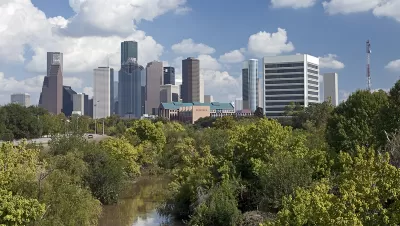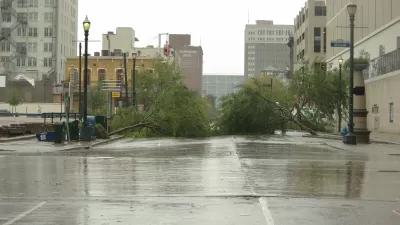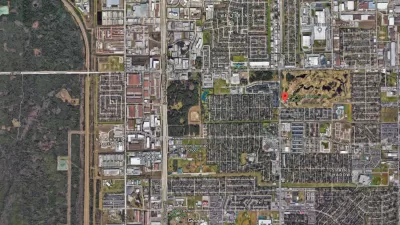The executive director of the Bayou Land Conservancy takes to the pages of the Houston Chronicle to describe the conservationist and landscape-focused efforts that can prevent floods like those that struck Houston this week.

"For the past twenty years, we at Bayou Land Conservancy have watched, horrified, as the Houston region's wetlands are scraped and filled in — directly resulting in increased flooding," begins an editorial by Jennifer Lorenz.
The reason for the account is the catastrophic flooding in Houston this week. According to the article, wetlands serve as the kidneys of the area's watersheds, running a process that serves as the foundation of the region's ecology.
Lorenz adds:
The rampant destruction of our forested and prairie wetlands is upsetting this balance, drastically reducing the land's ability to absorb water. By allowing so many wetlands to be turned into subdivisions, we're not just kicking them to the curb; we're turning them into curbs. We need the ecological equivalent of dialysis.
The editorial also includes a list of suggested actions to balance the need to protect the watershed while also meeting the construction demands of a growing population. The list includes, with more details in the article, planting more trees and native plants, better enforcement of existing construction regulations, more citizen-power in the building permit process, better landscaping on residential properties, better watershed awareness, and ceasing and desisting " trapezoidal concrete detention areas." On that last issue, Florenz writes: "Engineers like right angles; nature doesn't."
FULL STORY: Wrecked wetlands lead to flooding. Here's what you can do.

Planetizen Federal Action Tracker
A weekly monitor of how Trump’s orders and actions are impacting planners and planning in America.

Congressman Proposes Bill to Rename DC Metro “Trump Train”
The Make Autorail Great Again Act would withhold federal funding to the system until the Washington Metropolitan Area Transit Authority (WMATA), rebrands as the Washington Metropolitan Authority for Greater Access (WMAGA).

The Simple Legislative Tool Transforming Vacant Downtowns
In California, Michigan and Georgia, an easy win is bringing dollars — and delight — back to city centers.

The States Losing Rural Delivery Rooms at an Alarming Pace
In some states, as few as 9% of rural hospitals still deliver babies. As a result, rising pre-term births, no adequate pre-term care and "harrowing" close calls are a growing reality.

The Small South Asian Republic Going all in on EVs
Thanks to one simple policy change less than five years ago, 65% of new cars in this Himalayan country are now electric.

DC Backpedals on Bike Lane Protection, Swaps Barriers for Paint
Citing aesthetic concerns, the city is removing the concrete barriers and flexposts that once separated Arizona Avenue cyclists from motor vehicles.
Urban Design for Planners 1: Software Tools
This six-course series explores essential urban design concepts using open source software and equips planners with the tools they need to participate fully in the urban design process.
Planning for Universal Design
Learn the tools for implementing Universal Design in planning regulations.
Smith Gee Studio
City of Charlotte
City of Camden Redevelopment Agency
City of Astoria
Transportation Research & Education Center (TREC) at Portland State University
US High Speed Rail Association
City of Camden Redevelopment Agency
Municipality of Princeton (NJ)





























